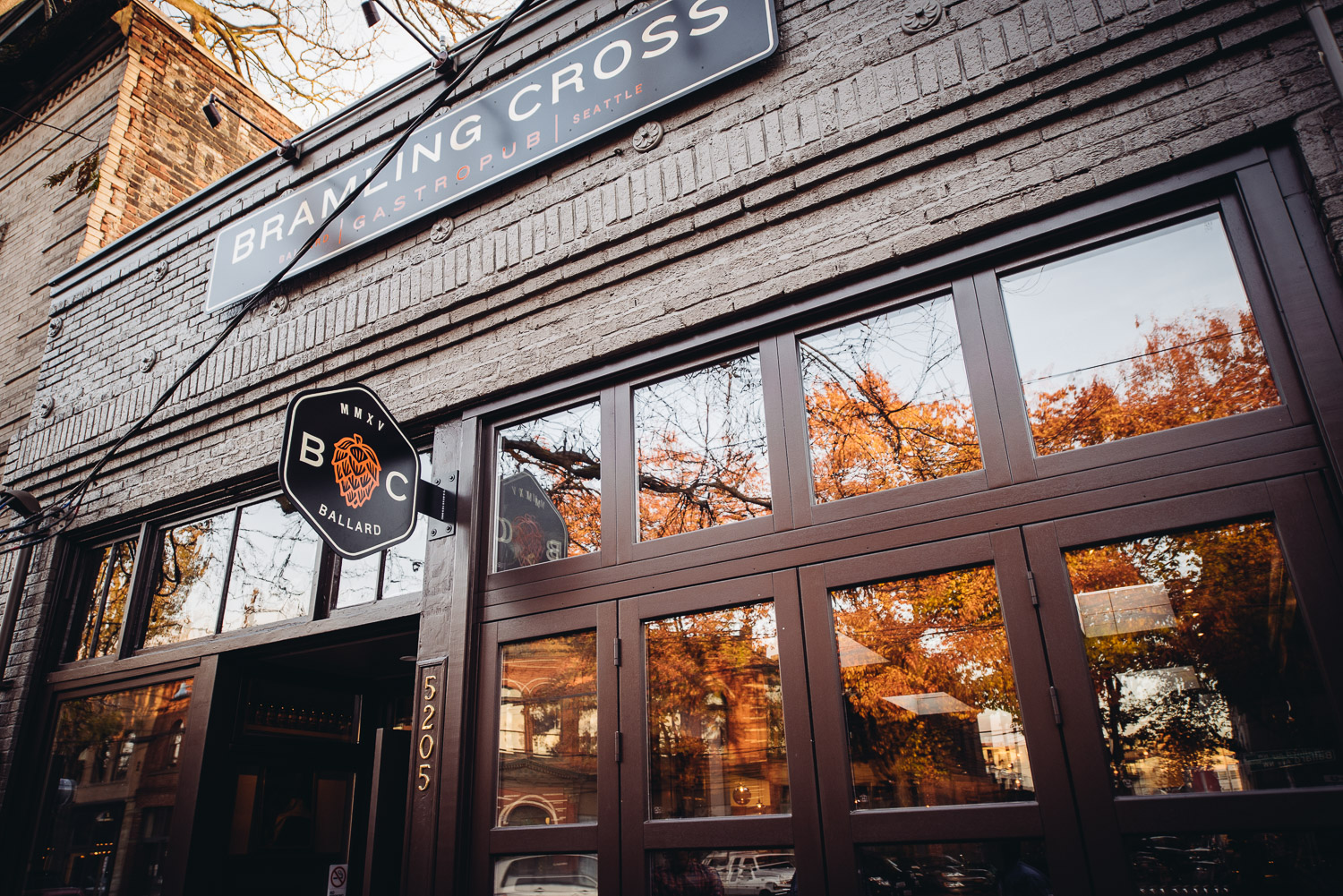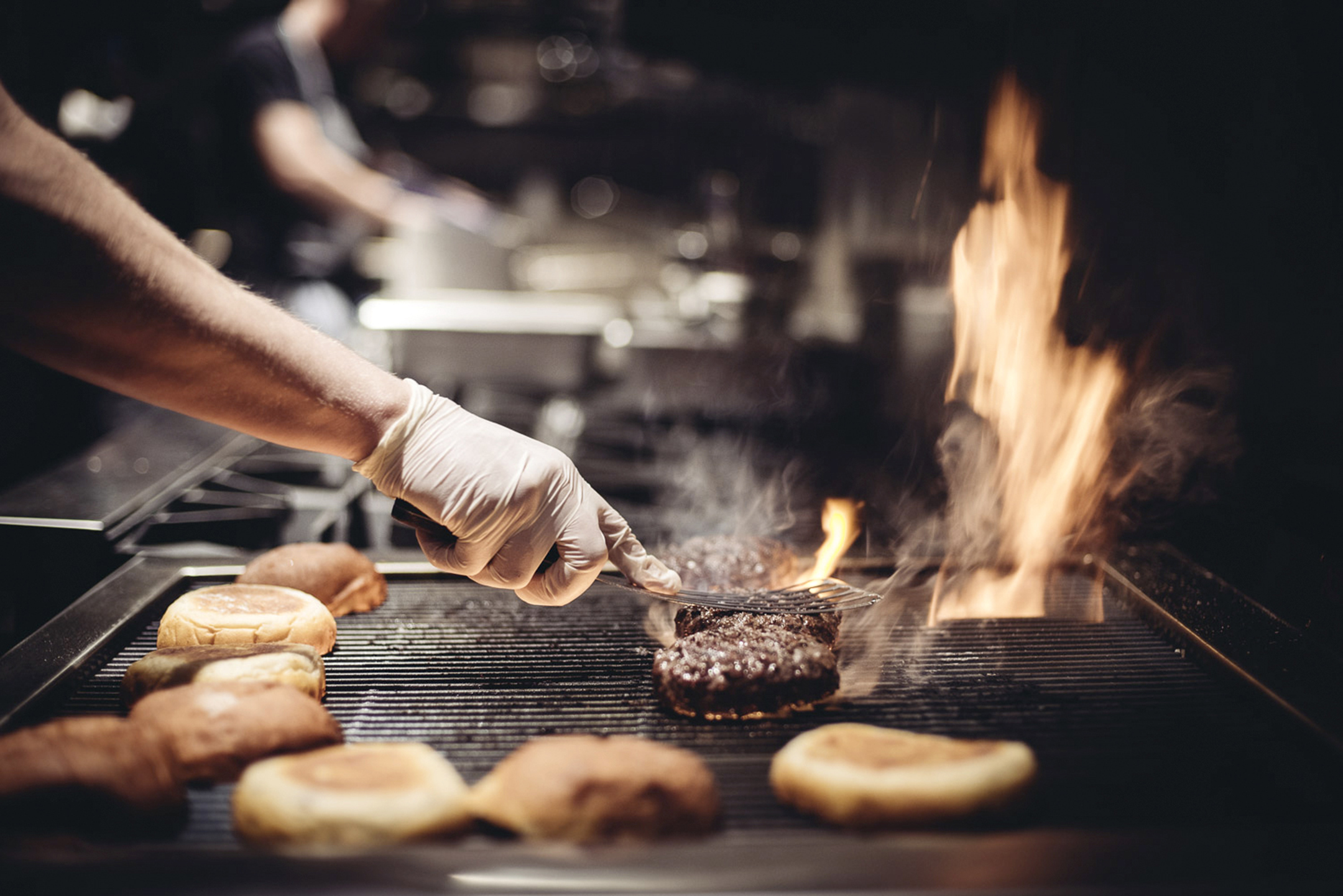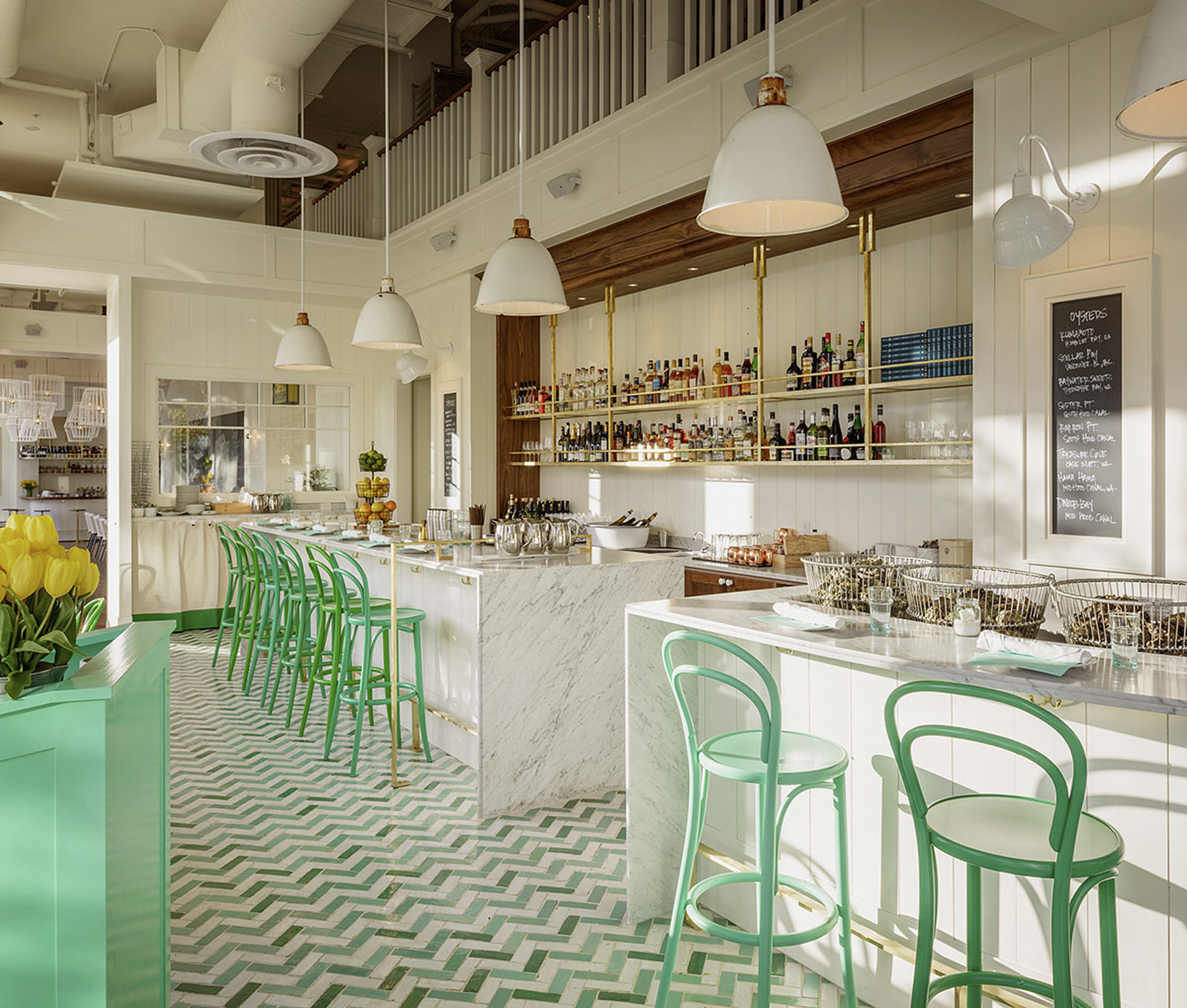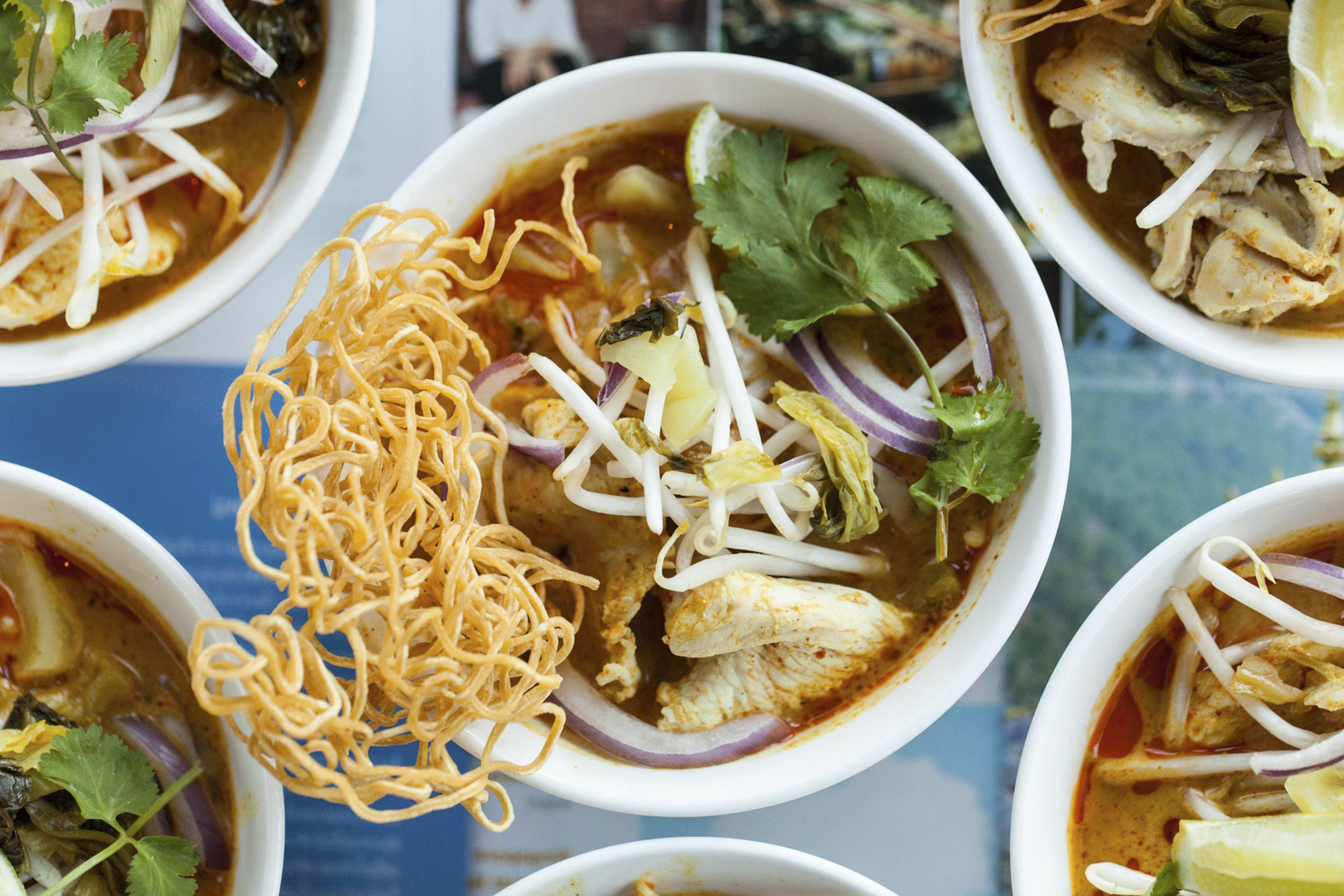If you’ve never been to Mojitos, it may be because of its location—a peninsula wedged between a quiet residential street and an exit right off Lake City Way on I-5 North. But once you’ve eaten at this 12-year-old South American restaurant, you’re definitely coming back.
The food is straight-up Latin-American and Caribbean home cooking, with dishes from Venezuela, Colombia, Peru, Cuba, Puerto Rico, and the Dominican Republic, full of flavor and prepared, with unwavering consistency, by South American cooks. The cocktails, particularly the rum-based mojitos, are just as they should be: made from fresh juice and mint, muddled and served with crushed ice. The vibe is authentic, too: The brightly painted yellow shack with lime-green trim, a small outdoor patio, salsa music, and drums in the corner would fit right in on a Caribbean beach. Seattleites like to bemoan the lack of great Mexican food here, but I’m more bothered by the scarcity of traditional Latin cuisine, which is why I find myself at Mojitos at least once a month.
What’s not traditional about the restaurant is its owners. Luam Wersom, who’s been a partner for four years, is actually a refugee from Eritrea, the country between Ethiopia and the Sudan often referred to as “The North Korea of Africa” because of its deplorable dictatorship and human-rights violations. Wersom’s family fled from there to Greece in 1988 before moving to Seattle via sponsorship from a relative here. He was just 12 when he met his future Mojitos business partner and co-owner, Venezuelan-born Juan Carlos Ganz.
It was 1990, and Ganz, then 22, frequently hung out at a now-defunct downtown hot-dog joint called Frankfurters. Wersom was the dishwasher there. By coincidence, Ganz’s father grew up in Kenya, where he owned coffee plantations, so Ganz speaks Swahili as well as Spanish and English. He remembers that when young Wersom heard him speak Swahili for the first time, the boy was amazed. “You’re not black,” he said. Ganz recalls that Wersom was “a very shy kid, skinny, looking for a big brother.” Ganz took him under his wing, and the two—10 years apart—became as close as family. Talking about their seemingly disparate South American and African upbringings, Ganz points out that the scenery in Venezuela and Kenya are strikingly similar—“the terrain, the trees, the coffee fields.” He also reminds me that salsa’s roots are in the Afro-Cuban tradition, and that they share the “music and drums” of the Yoruba culture.
Ganz opened Mojitos right after 9/11, not the best time to start a business, but word got out fast and people started flocking. He’d certainly done his homework, touring South America, staying with family in Venezuela and Colombia, tasting the food he grew up with and gathering menu ideas. The result was a greatest-hits list of dishes that he still makes 12 years later. He was also sampling mojitos, because “at the time the drink wasn’t served here.”
While the recipes are authentic, Ganz added his own subtle twists to the sauces and marinades—secrets only he and Wersom know, to which not even the cooks are privy. Asked if the cooks add their own flair to any dishes from their native countries, Ganz smiles: “We listen to their suggestions and sometimes try some out, but when they start to turn a dish into something that’s more familiar to them, we pull it back. We really control the menu.” His cooks, it’s worth noting, have been with him for seven years—a long time by restaurant standards.
Wersom came aboard Mojitos as a dishwasher, but Ganz says he quickly realized that “He took the job as something that was his own, took the worries and all.” The two have the easygoing rapport—and the one-upping rivalry—that you’d expect from real brothers. Joking about a recent South American trip they took together (another tasting tour, and a great immersion in the food for Wersom), Wersom laughs and points to Ganz: “He controls the money. I have to ask him for an allowance when we’re traveling.”
Ganz shoots back: “This one doesn’t understand exchange rates. He wanted to buy, like, an old Spanish coin, and it cost $15,000!”
“Nah, really, no, it was $1,200, wasn’t it?” Ganz rolls his eyes.
“Juan Carlos is the paperwork guy; he takes care of the employees and the bills,” Wersom adds. “Me, I’m more about the ambience, the food, the people person.”
It’s true, he is. Charming and attractive with his high cheek bones, dark eyes, and flawless tawny skin, Wersom chats up customers effortlessly between runs to the kitchen and moving in crates of papayas and limes. As we’re talking, he walks over and starts speaking Spanish to an older American woman who, to my surprise, answers fluently.
Motioning to a waiter, he says “Hey, make sure you speak Spanish to the senorita.”
Ganz says Wersom’s Spanish is decent, but that he manages to fool everyone at the restaurant into thinking he’s fluent. The joking stops when they talk about food. I ask about their most recent trip to South America, and they start throwing out names of dishes that “blew their minds.”
“Even the food at the airport . . . the steak there was amazing!” Wersom says.
“The pollo en brasa in Venezuela,” Ganz adds.
“Oh my God, yeah. In Colombia though, right?” replies Wersom.
“It was better in Venezuela,” Ganz declares.
Then they both start reminiscing about the dish, seeming to forget I’m even there. Pollo en brasa is a whole chicken cooked on a woodstove that packs it with an incredibly smoky flavor. They don’t have that kind of stove, but say they might open a small place someday that only serves chickens in that style.
I ask them about opening another Seattle Mojitos (they have one in Burien)—perhaps in a neighborhood with better foot traffic. They say it’s part of their plan: maybe in Bellevue, maybe downtown Seattle. They have been amping up their catering, they tell me. And one of their regular customers, Melinda and Bill Gates’ personal chef, Carl Vince, “did a party for Melinda’s family basically using our food,” says Wersom. “Yeah, we haven’t been paid for that yet. Make sure you print that,” he jokes.
But based on all the people flowing in on a beautiful Sunday evening—the one night they serve sancocho, a hearty fish-and-potato stew popular throughout South America and the Caribbean—there’s no hurry. The salsa is thumping, people are dancing, kids (including my half-Colombian daughter) are banging on the drums between spoonfuls of the addictive soupy black beans and rice (surprisingly made with no lard or animal fat). My sangria with icy chunks of mango tastes great with my mojito pescado—fish cooked in a banana leaf and seasoned with paprika and cinnamon.
With the sun beating down on me, there’s not much of anything else I want right now—except, that is, the recipe for their fiery, garlicky mojito sauce. When I tell them I’ve been experimenting at home, Wersom, trying to keep a straight face, says, “Yeah, throw in some green peppers, a lot of mustard, you got it.” As with the cooks, who don’t know the whole recipes, there’s not a sliver of a chance they’ll give it to me. But that’s OK, I’ll keep experimenting—or, more likely, just keep coming back for theirs.









